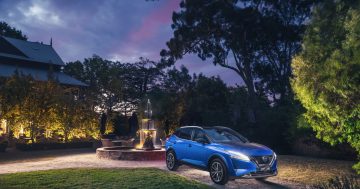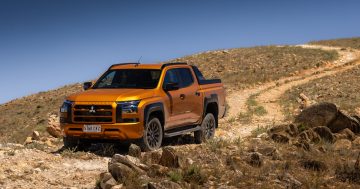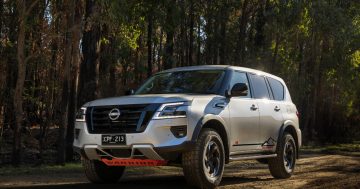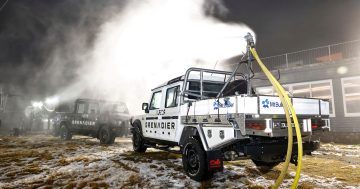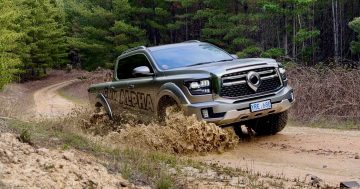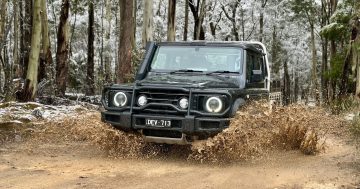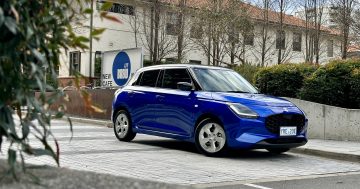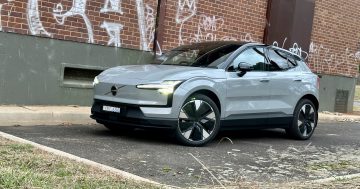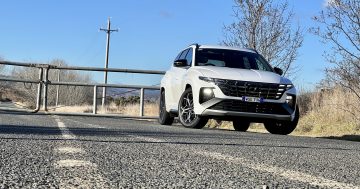By Karl Peskett.
 Australia’s position as a mineral exporter has never been more critical. Off the back of record interest rate lows and falling housing prices, the country needs something to prop it up. Something to boost the economy. Something to keep industry ticking along to ensure the bottom doesn’t completely fall out of the fiscal system.
Australia’s position as a mineral exporter has never been more critical. Off the back of record interest rate lows and falling housing prices, the country needs something to prop it up. Something to boost the economy. Something to keep industry ticking along to ensure the bottom doesn’t completely fall out of the fiscal system.
Mining is of supreme importance, to the extent that hi-visibility clothing has become an accepted norm. No-one bats an eyelid when someone walks through the shops in full head-to-toe fluro gear, and even a few years ago, a visit to the Qantas lounge in Perth was virtually wall-to-wall hi-vis.
Today, vehicles drive around with hi-vis striping and asset numbers, yellow arrow-caps on wheelnuts and aerials dotted around the place – a virtual uniform for cars, trucks and utes that need to visit places concerned with OH&S.
Nissan has joined the fray, offering a “mine-spec” pack for its work hack, the Nissan Navara. And despite its agricultural exterior, it’s actually a lot nicer to be in than to look at.

Let’s start with the outside, where a simple glance says that it’s a blue-collar vehicle. Up front is a genuine Nissan bullbar, one that still activates the front airbags in the event of a collision. The flanks receive a 3M hi-vis fluro yellow-green strip, in BHP-specified 50mm width. There are small stickers applied to advise the distance at which to high-pressure hose the sides, so as not to wreck the stripes, but as someone who cut their teeth in signage, I can say that the BHP spec hasn’t been fully conformed to – there should be 6mm clear vinyl applied to all edges to stop dirt getting into the reflective cells (which has started already on our test car), or the edges should be heat sealed before applying the striping.
The rear gets a Pilbara Motor Group tray, one that has been fitted by PMG in Perth, and there’s a spare wheel mounted vertically behind the cab, rather than underneath where it’s more prone to punctures. A fire extinguisher, yellow wheel-nut arrows, red flag, roof mounted LED indicators and roof-mounted beacon round out the package.
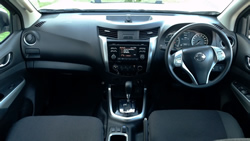
There is an issue, however. Rearward visibility isn’t great, thanks to a steel mesh across the full rear window, but it’s even worse due to the full size spare wheel blocking the driver’s half. Thankfully, there’s a rear-view camera that helps you when reversing, but you’ll need to get used to the extra length that the tray brings, especially if you normally back into a parking spot.
We also need to mention that when the weather turns sour, a lot of rain runs off the bonnet and gets trapped behind the bullbar, so as you’re driving, there’s a lot of water that gets sprayed up onto the windscreen from the bullbar. Even when the rain has stopped, you’ll still be using the wipers for a while longer.
Of course, you’d think that to get a fleet deal, Nissan would be kitting out RX models, as they automatically come with a tray and are the cheapest version you can buy in dual-cab form. However, the RX only comes with a diesel engine with a single turbo, and the extra weight of all the accessories would severely blunt the power delivery.
The solution is to use the SL spec, which comes with a twin-turbo 2.3-litre diesel, upping the power from 120kW to 140kW, with the torque likewise jumping from 403Nm to 450Nm. After driving it for a week, we are pleased to say this is the right decision, because the mine-spec edition still feels rather heavy, so any extra power is welcome.

You can also feel the extra wind resistance from having the bullbar and the open tray, especially at highway speeds, where you’ll need a bit more throttle to maintain the national limit.
However, the extra weight and smaller, steel wheels means that although the handling isn’t as sharp as a standard Navara dual cab, the payoff is that the ride is very, very good indeed. You don’t get the jolting and jarring that normally comes with an unladen vehicle, especially over speed bumps, and we reckon this is how a Navara should ride as standard. With that smoother, quieter suspension, the mine-spec version is very nice to drive. You can forgive the heavier steering, the less urgent acceleration and the extra fuel consumption, purely because it’s so comfortable to be in.
Of course, the tyres help in this respect, and if fitted with all-terrains, things would be different. And that may be necessary, depending on where these vehicles go. If purely driven to and from mine sites, with the occasional off-road jaunt, the mine-spec’s standard Open Country tyres are just fine. If it’s something a bit more heavy-duty, then it will need something with a more open tread pattern.

The Navara comes as standard with on-demand four-wheel-drive, with a simple switch that dials up the mode you’re after. Couple that with a locking rear differential and the mine-spec Navara is well equipped to handle most conditions, whether or not you choose different tyres.
Inside, there’s easy-clean vinyl floors (with nice, deep, rubber floor mats), Bluetooth phone and streaming, USB inputs, crisp air-con, and PMG-supplied seat covers which protect the standard cloth from the thick red dust that mining usually brings.
There’s a lot of thought that has gone into the Navara, and it will undoubtedly suit its role perfectly. Whether or not fleet buyers can get over their habitual go-to model, the HiLux, will ultimately decide whether the Navara becomes even more ubiquitous than the Toyotas plastered in hi-vis tape. Given the DPF issues that have plagued the HiLux of late, it’s very possible.


